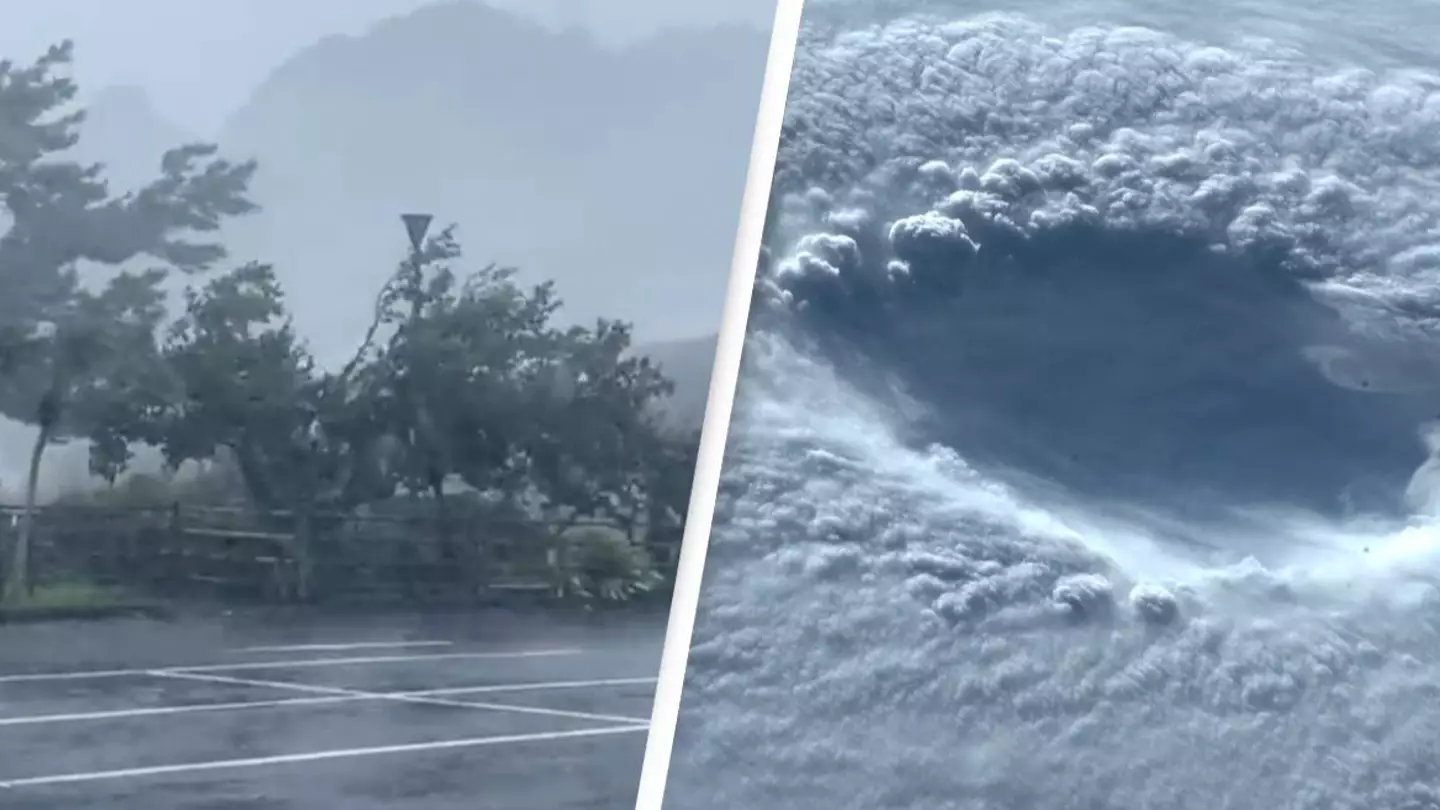
Authorities in Japan have encouraged millions of people to seek shelter or evacuate as a powerful typhoon sweeps across the country.
Typhoon Nanmadol made landfall this morning (18 September) and brought with it winds of 112mph (180 km/h) and heavy rains reaching up to 20 inches in some areas.
It first hit near the city of Kagoshima on the southern tip of the island of Kyushu, one of the four islands that make up the main body of Japan.
The island has a population of more than 13 million people, and at least four million residents have been told to evacuate their homes as extensive flooding, landslides and storm surges are expected as a result of the storm, along with winds that could cause homes to collapse.
Japan's Meteorological Agency has given Typhoon Nanmadol its highest classification of 'violent', while the US Navy's Joint Typhoon Warning Center has classified it as a super typhoon, with the storm having the potential to be Japan's the most destructive tropical storm to strike in decades.
Speaking before the storm made landfall today, an official from Japan's meteorological agency said Typhoon Nanmadol had the potential to be worse than both Typhoon Jebi in 2018, in which 14 people died, and Typhoon Hagibis in 2019, which caused widespread power cuts.
Advert
Weather agency NHK put a special warning has been put in place for the Kagoshima Prefecture, and the second-highest level evacuation instructions have been put in place for people in Kagoshima, Kumamoto and Miyazaki.
More than 9,000 residents have already taken shelter at evacuation centres.
"There are risks of unprecedented storms, high waves, storm surges, and record rainfall,” Ryuta Kurora, the head of the Japan Meteorological Agency, said.
Advert
"Maximum caution is required. It’s a very dangerous typhoon. The wind will be so fierce that some houses might collapse."
After making landfall, the typhoon is now moving north across Kyushu and is expected to travel up towards central Japan and Tokyo over the coming days. It has already caused rivers to rise, in turn increasing the threat of land and mudslides.
The country is used to receiving heavy rains during typhoon season, though climate change is thought to be responsible for making them bigger and their impacts more destructive.
After passing over Tokyo on Tuesday, the typhoon is expected to move out to sea the following day.
Advert
If you have a story you want to tell, send it to UNILAD via [email protected]
Topics: World News, Weather